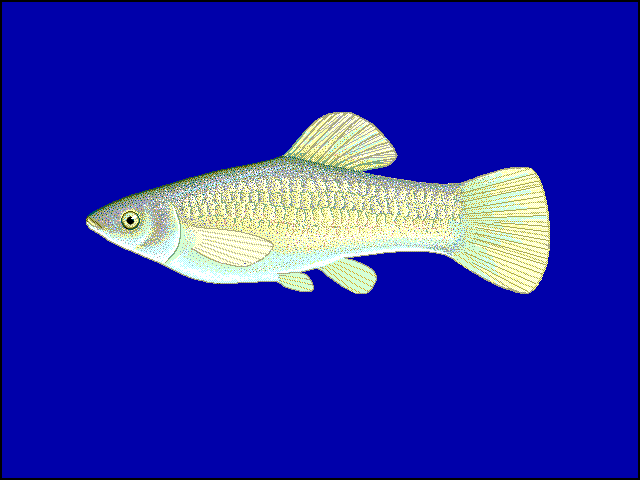Every so often, scientists discover that something isn’t actually the way they thought it was, and it’s happened again. This time, the findings have to do with the Amazon molly, a species of fish that’s categorized as asexual, although it does still need to mate with a male in order to reproduce.
The Amazon molly lives in creeks and rivers along the border between Mexico and Texas, and it’s an all-female species, which is why it is classified as asexual. Scientists have been studying the species because they expected it to have severe genetic flaws, but they discovered no such flaws. In fact, researchers say that the Amazon molly is an especially hardy species.
It’s named after the female Amazon warriors of Greek mythology. Researchers from the University of Wurzburg said today that they’ve sequenced the genome of the species to discover how it reproduces despite being an all-female species.
The scientists explained that the Amazon molly reproduces asexually through a process called gynogenesis, which basically just means that each fish’s offspring is a clone of herself. In order to trigger the process, however, the fish must mate with a male fish from a closely related molly species. What makes the Amazon molly unique is that none of the male fish’s genes are passed on to the offspring. Instead, the sperm triggers the cloning process by penetrating the egg, but the egg then destroys all the male genes during the cloning process.
The scientists who studied the fish’s genome explained their findings in a paper published in the journal Nature Ecology and Evolution. They said that there are two reasons that species which reproduce asexually shouldn’t survive for long periods of time.
One is that eventually, they would expect harmful mutations to occur in a genome, and in species that reproduce by cloning themselves, the defects would propagate through generations until eventually, there are no more healthy members of the species. According to scientists, species that reproduce sexually have an easier time eliminating harmful defects because each of the offspring receives half its chromosomes from each parent.
The other reason scientists wouldn’t expect the Amazon molly to survive for many generations has to do with the fact that all the offspring are clones of their mothers. The research team said that typically, this type of species can’t adapt to changes in their environment as fast as species that reproduce sexually. As a result, scientists would expect such a species to become weaker and weaker over time and eventually die out due to evolution.
In order to learn why the Amazon molly seems unfazed by evolution, scientists decided to sequence its genome, and their main finding was a lack of “genetic degeneration.” Instead, they said they found “a unique genetic variability and clear signs of an ongoing evolutionary process.” They also explained that the known asexually-reproducing vertebrates are actually hybrids of two species. They hypothesized that the reason there are so few asexually-reproducing species is because very specific and rarely occurring conditions are needed for a hybrid genome to form.












